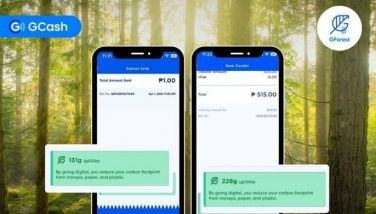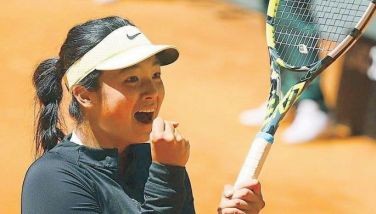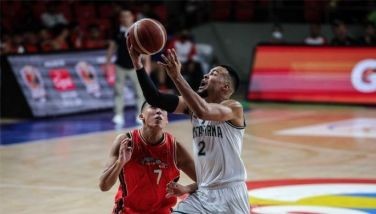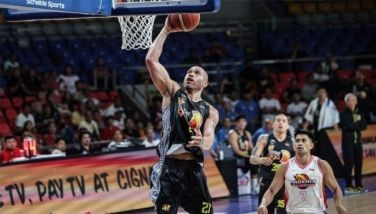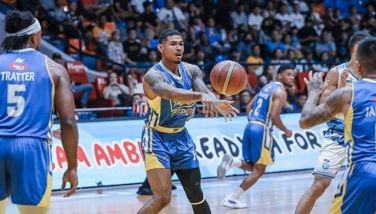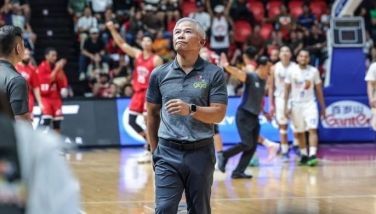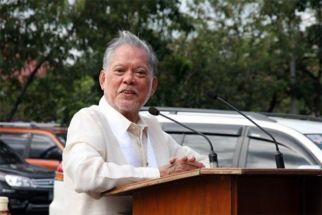Atoy’s stories
It’s always a joy to sit down and talk with retired PBA Most Valuable Player Atoy Co. Even at 60, he is still endlessly enthusiastic, energetic and animated in recalling the glorious early days of the PBA. Time literally flies, as you almost feel like you were there in his NCAA and MICAA days until he became part of the pioneering class of the PBA.
The two-time NCAA Most Valuable Player from Mapua at the start of the 1970’s was already practicing with Crispa’s MICAA squad in the evenings after Cardinals scrimmages in the mornings. But he was allegedly being discouraged from doing extra practice so he would not win the honor a third time and keep the Carlos Loyzaga trophy permanently.
“Since that was the case, my very last varsity game I didn’t play anymore,” Atoy told this writer in an interview in the restaurant named after him in Metrowalk. “All the more I lost the MVP race. But since Crispa was already getting me, I gave it a try, even if I would just be a third-stringer assigned to guard the other team’s shooters.”
It was there that Co refined his trademark fadeaway jump shot even further, as he gave way to his more senior teammates like Bogs Adornado, who would also be his fellow Redmanizer in the PBA. It was also where they developed the teamwork that would later win them a record-setting 13 championships as professionals.
“For me, William had the best form as a jump shooter,” Atoy continues. “You see, our style before at Crispa was, if we saw you were hot, you would get the ball. You would keep getting the ball until you were tired of it and said you didn’t want it anymore, and then it would be our turn.”
Eventually, when MICAA team owners felt abused by the Basketball Association of the Philippines’ overuse of their players for the national team, thy decided that the only way to escape the forced obligation was to organize a professional league. At the time, pros were not allowed to participate in international competitions. So nine teams bolted and formed the PBA, which first started filling up the Araneta Coliseum in April of 1975. Their first commissioner, the genial Leo Prieto, correctly predicted that building up rivalries and personalities would create fan loyalty and continuous patronage. Thus, the Crispa Redmanizers and Toyota Comets’ rivalry sent fan interest through the roof.
“Whenever Crispa and Toyota would play each other, it was like Manny Pacquiao having a fight now,” Atoy says in the vernacular. “Less crime also. If you had a ticket, you were at Araneta. If you didn’t if you were on the street, where would you go? You would go to the appliance store, where you would see crowds of people watching Crispa-Toyota.”
On opening day of the 1977 season, Crispa came back after trailing all the way to beat Toyota. Some teasing on the way to the locker room erupted into a fistfight, and even Crispa coach Baby Dalupan was accidentally struck by an opposing player. The players were restrained, but the following day, both teams were visited by the authorities and “invited to police headquarters in Camp Crame. There, with both teams on opposite sides of a long conference table, police chief Gen. Prospero Olivas read the riot act.
“He said ‘You shouldn’t have done that. Children will imitate you. Do you know that I could have you jailed?’” Co recalls. “Then we looked at each other as if to say, yeah right. I think he got insulted, so he shouted ‘Book them!’”
After being finger-printed and processed, both the Toyota and Crispa players were herded onto a Metrocom bus and brought to military headquarters in Fort Bonifacio, where they shared a cell as official guests of the Martial Law state. All their cars were left at Camp Crame. Later, their wives and loved ones sent food and blankets and beddings, and the players rued what they had brought upon themselves. At about 3:30 in the morning, a sergeant opened the cell door and told them they were free to leave. The players were slow to respond, thinking he was kidding. It was only when the sergeant threatened to slam the door again that the players scurried out, hurriedly picking up their belongings. After another tense bus ride, they were greeted by their families back at Camp Crame.
Still, the errant players had to face the music in the PBA. Com. Prieto promptly fined each one of them what was then a princely sum of P5,000 each. That was the first and only time two PBA teams were even arrested by the authorities.
In 1979, Atoy made history, becoming the first PBA player to score 5,000 points. It was, to say the least, an impressive feat, considering the league did not have a three-point shot in place yet.
“We were playing Tanduay, and I made my 5,000th point after scoring 37 or 38 points,” he remembers. “Other players made 5,000 needing to score only seven or eight points to do it in that game. I’m really proud of that.”
In 1984, Atoy beat the field again, setting another record as he became the first player in PBA history to score 10,000 points. With all this recognition, even he finds it hard to believe he did all those things.
“We really had some great fans who would do anything for you, so you didn’t want to let them down,” the movie and TV actor adds. “I used to be embarrassed talking about my accomplishments, like I was bragging. Now, I tell my players at Mapua about it. I did those things. I was the number one or number two player on the Philippines!”
And definitely one of the best story-tellers.
- Latest
- Trending








